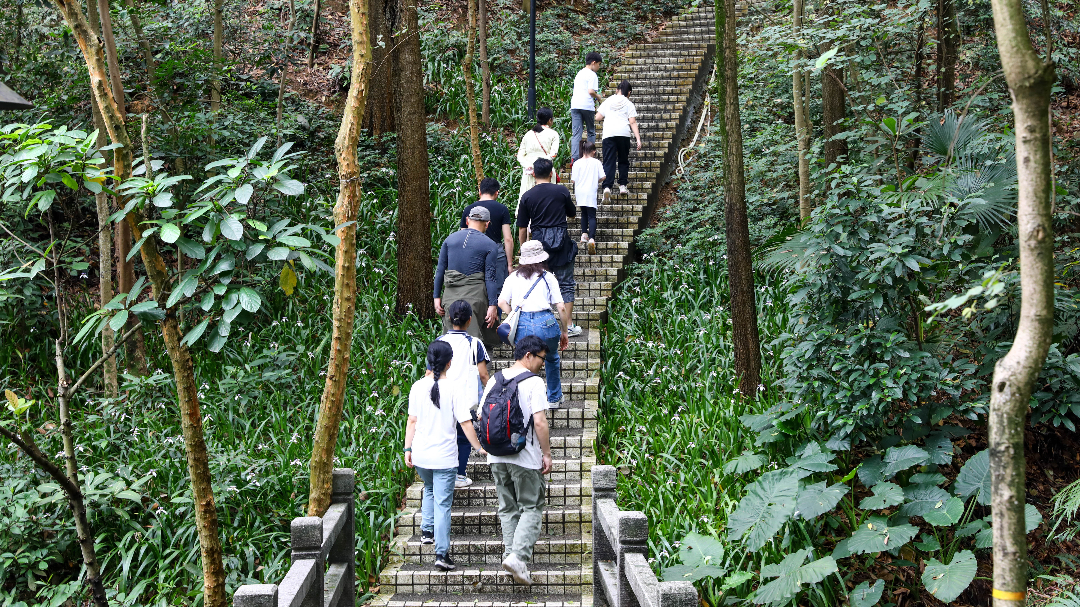As exercise is gaining more popularity among people, the accompanying sports injuries also concern a lot of people. On the 15th National Fitness Day of China, Zhang Zhengzheng, Associate Professor of the Department of Orthopedics at Sun Yat-sen Memorial Hospital, provides advice for badminton and mountaineering enthusiasts to enjoy exercise while avoiding sports injuries as much as possible.

(Photo: Nanfang Daily)
Badminton
Badminton is often regarded as a sport with power and speed, which requires fast reflexes and swift action. But if you hear a "bang" sound during running, accompanied by a sharp pain in the Achilles tendon, you should pay attention to it.
“If the injured leg is unable to stand, walk, stand on tiptoe, or lift the heel, and there is some bruising and swelling near the heel, these could be the signs of an Achilles tendon rupture,” said Zhang. “Don’t be nervous or afraid of this kind of sports injury, and you need to seek medical attention in a timely manner,” he added.
Achilles tendon ruptures can be treated with either surgery or conservative (non-surgical) measures. Non-surgical treatment needs to be carried out after assessment by a medical professional and is mainly applicable to patients with partial Achilles tendon rupture.
A long leg cast can be applied to minimize tension on the Achilles tendon to promote healing, and the duration and type of cast immobilization will be decided according to the healing status. After that, the patient can gradually do functional training.
Surgical sutures can be used for patients with severe rupture, old injuries, or those who have higher requirements for healing and wish to do sports as soon as possible. A period of rehabilitation is also required after surgical treatment.
How to prevent an Achilles tendon rupture?
According to Zhang, on the one hand, we can reduce the risk by making sure we stretch and warm up well before working-out. On the other hand, it is also important to play badminton on a professional badminton court and wear the right shoes for badminton.
Mountaineering
Meanwhile, we should also be vigilant against chondromalacia patella (CMP) during mountaineering on holidays.
If you experience knee joint swelling, pain, limited joint flexibility and extension during mountain climbing or in daily life, or even difficulty going up and down stairs, and your knees become soft and falling, you should also pay attention. This is probably caused by excessive exercise.
The treatment of CMP involves rehabilitation therapy, medication, physical therapy, and maybe surgery.
(1) Rehabilitation therapy: First of all, avoid frequently going up and down stairs and mountain climbing. After sufficient rest and relief of joint swelling and pain, it is necessary to strengthen the strength of the quadriceps.
(2) Medication: Glucosamine hydrochloride or glucosamine sulfate can help. But if you experience significant pain and swelling, you can take nonsteroidal anti-inflammatory drugs under the guidance of your doctor to relieve pain and swelling.
(3) Physical therapy: You can choose heat therapy, acupuncture, and ultrashort wave therapy to improve blood flow and help reduce inflammation and pain.
(4) Surgery: For patients with aggravated symptoms who fail long-term conservative treatment, minimally invasive surgery can be considered after evaluation by professional doctors.
How to prevent chondromalacia patella in everyday life?
Firstly, it is necessary to do more training that improves overall well-being (stamina, speed, agility).
Secondly, warm up fully before mountaineering and increase the intensity of your training step by step.
Thirdly, when discomfort occurs in the knee joint, rest and seek medical treatment in time to prevent aggravating cartilage damage.
Author | Nico (intern), Hannah
Editor | Olivia, Monica, Jerry
















